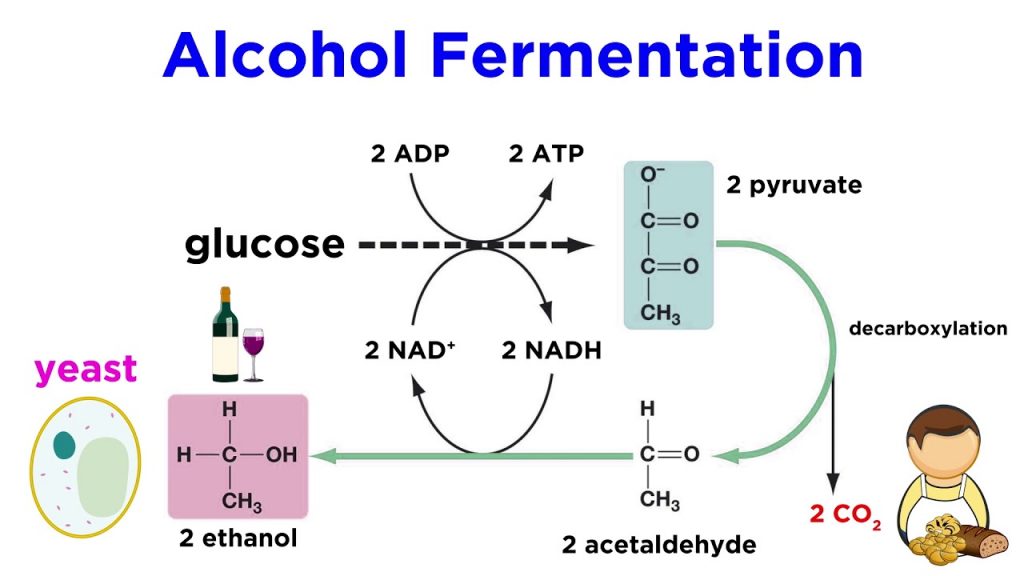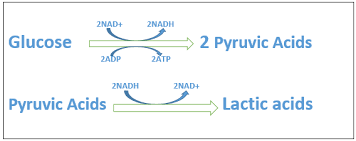What is Anaerobic Respiration
Anaerobic Respiration can be define as the process, in which a small amount of energy is released in the absence of oxygen (air) from the breakdown of food substances.
- In Anaerobic Respiration less energy is released from each glucose molecule compared to Aerobic Respiration.
- Anaerobic respiration takes place in yeast, bacteria and in human muscles.
- Anaerobic respiration is termed as Fermentation in Microorganisms.
Also Check- Differentiate Between Aerobic and Anaerobic Respiration
2 Types of Anaerobic Respiration
On the basis of the products formed, Anaerobic Respiration is categorized as two types-
- Alcoholic Fermentation
- Lactic Acid Fermentation
Alcoholic Fermentation
An incomplete breakdown of sugar into ethanol and carbon dioxide to release energy is called Alcoholic fermentation.
Alcoholic Fermentation process occurs mainly in yeast, which is used to produce beer, wine, toddy, cheese etc. by brewing.

Lactic Acid Fermentation
Lactic Acid Fermentation can be defined as the process of incomplete breakdown of sugar into lactic acid and energy in some bacteria, e.g. in yogurt some bacteria cause milk to turn sour.
These bacteria feed on sugar and break it into lactic acid.
In human muscles, during vigorous physical exercise, glucose is metabolized to form lactic acid. The accumulation of lactic acid causes fatigue and muscle cramps after prolonged exercises.

Anaerobic Respiration in Working muscles
When muscles work hard, such as during a race, they contract more and so need more energy. This is released from respiration. Much of it comes from aerobic respiration, but some anaerobic respiration also takes place to provide an extra boost of energy.
Anaerobic Respiration in Working muscles
When muscles work hard, such as during a race, they contract more and so need more energy. This is released from respiration. Much of it comes from aerobic respiration, but some anaerobic respiration also takes place to provide an extra boost of energy.
Also Check- Respiration in Human Beings
Explanation of Anaerobic Respiration with Runners example
- At the start of the race, the lung and heart supply enough oxygen to the whole body for use in aerobic respiration.
- Before activity, muscles are free of lactic acid.
- When anaerobic respiration occurs, its waste product – lactic acid – builds up in muscle cells.
- During the race, the heart beats faster and breathing speeds up so more oxygen is delivered to muscles for more aerobic respiration.
- But soon, the heart and lungs are working as fast as they can. Some extra energy then comes from anaerobic respiration, which doesn’t need any more oxygen, but produces waste lactic acid.
- After the race, the muscles stop working so less energy is needed and anaerobic respiration stops.
- But the heart and lungs keep working hard for a while – the extra oxygen they deliver now being used to break down the lactic acid.
- The accumulated lactic acid can sometimes cause cramps, making the muscles painful to move.
- Oxygen debt – For a short while after the race, the runner continues to take deep breaths until the oxygen debt has been repaid. This is the amount of oxygen needed to break down the lactic acid, producing carbon dioxide and water.


3 Comments on “Anaerobic Respiration Class 10”